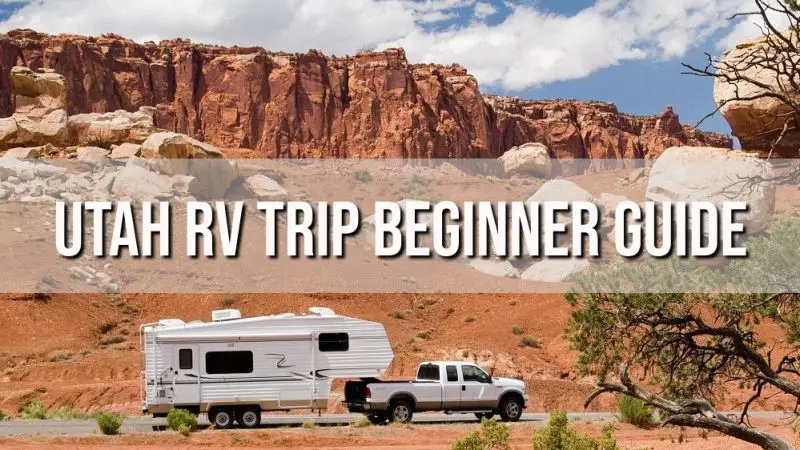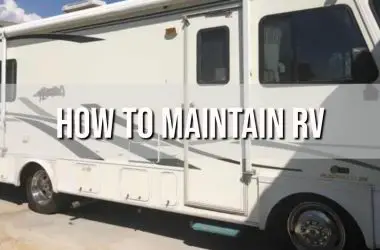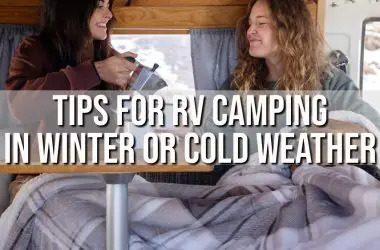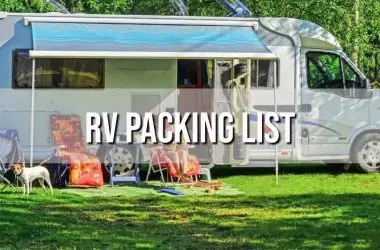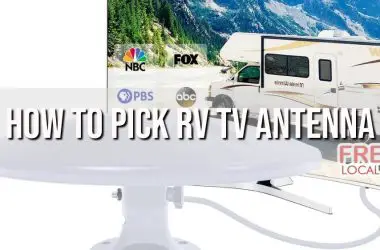Utah RV Trip Beginner Guide – Planning an RV trip through Utah can be an exciting and memorable experience, especially for first-time RVers. With its incredibly diverse landscapes, ranging from rugged red rock canyons to alpine forests, Utah has an abundance of stunning scenery and adventure to enjoy from an RV.
This beginner’s guide will provide you with all the essential information you need to start planning your own Utah RV adventure, from understanding RV basics and trip planning to packing tips, road safety, finding campgrounds, and exploring Utah’s top attractions. Follow these tips to ensure your Utah RV trip goes smoothly while creating lasting memories exploring the Beehive State’s natural wonders and cultural highlights.
Key Takeaways
- Research RV types and learn maintenance basics before renting or buying. Class B’s and C’s are great for Utah’s narrow mountain roads.
- Plan your route and timing carefully. Spring and fall have mild weather while summer brings crowds.
- Pack RV and personal essentials like water, food, first aid supplies, and layers of clothing.
- Observe all road safety and Utah driving laws like speed limits and seatbelt use. Schedule plenty of rest.
- Reserve campsites at least 6 months out. Consider BLM land and RV parks with hookups.
- Visit Utah’s “Mighty 5” national parks along with monuments, forests, and charming towns.
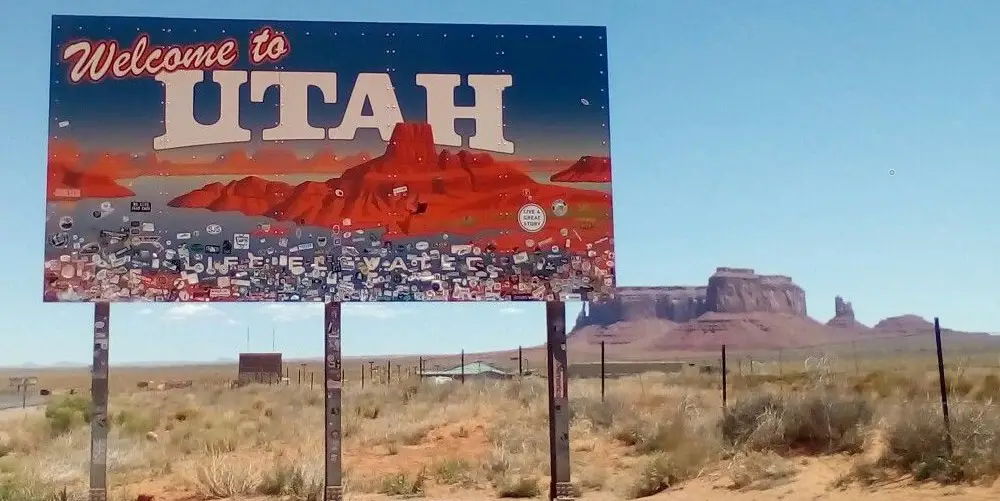
Why Choose Utah for an RV Trip
Utah is an ideal destination in the American West for an epic RV road trip. Within its varied terrain, you’ll discover five national parks including Zion, Bryce Canyon, Capitol Reef, Arches, and Canyonlands, which contain incredible rock formations, steep canyon walls, arid desert landscapes, and striking red sandstone cliffs.
In addition, Utah is home to several national monuments and state parks that offer excellent hiking, rock climbing, mountain biking, and photo opportunities. You can explore Native American archaeological sites, dinosaur fossil beds, and pioneer-era towns as you traverse the state in an RV. With endless adventures and stunning scenery, Utah provides the perfect playground for an unforgettable RV trip.
The state’s extensive network of scenic byways and backroads is ideal for RV travel. You’ll navigate winding canyons, dizzying cliffside overlooks, and gradual mountain passes. Utah’s roads lead you through epic landscapes like Zion’s checkerboard mesa and the hoodoos of Bryce Canyon. RVing gives you the freedom and flexibility to roam at your own pace and take detours wherever you please.
Utah’s excellent tourism infrastructure also adds to its appeal as an RV destination. The state boasts numerous RV campgrounds, service centers, dump stations, and fueling stations to accommodate RVers. You’ll find campsites within or nearby its national parks and monuments, so you can enjoy sunrise views of Delicate Arch before the crowds arrive. Overall, Utah provides endless adventure coupled with the convenience of being RV friendly.
Understanding RV Basics
For first timers, it’s important to learn RV basics before embarking on a Utah road trip. This will help you select the right rig, learn maintenance tasks, and get comfortable with RV living. Consider the following RV fundamentals:
Types of RVs
There are several types of RVs to consider:
- Class A – The largest RV type, built on a bus frame with amenitites like slide-outs, kitchens, and bathrooms. Best for long trips and full-timing. Difficult for narrow roads.
- Class B – The smallest RV type, built on a van frame. Well-suited to Utah’s tight mountain roads. Limited living space. Better fuel economy and parking than larger RVs.
- Class C – Medium-sized RV on a truck frame with an attached cabover sleeping space. Balances size and maneuverability. Popular for its affordability.
- Travel Trailers – Towed RVs ranging widely in size and floorplans. Can be hitched to an SUV or truck. Lightweight models available for smaller tow vehicles.
- Fifth Wheels – Towed RVs connected via a fifth wheel hitch in the bed of a pickup truck. Very stable and roomy. Require a heavy-duty tow vehicle.
- Pop-Up Campers – Canvas-sided trailers that expand once parked. Lightweight and affordable. Limited protection from elements.
Consider your budget, vehicle, group size, and preference for amenities when choosing an RV for Utah’s terrain. Test drive different RV types beforehand to get a feel for driving and backing up a larger vehicle.
RV Maintenance Basics
It’s key to learn how to perform basic RV maintenance before your trip:
- Generators – Check oil levels and that it starts properly. Refuel and run it regularly to maintain it.
- Batteries – Fully charge house and chassis batteries. Check terminals are corrosion-free. Monitor voltage levels.
- Propane Tanks – Ensure tanks are filled. Inspect hoses for leaks with soap solution. Replace regulators every 5-10 years.
- Tires – Check for adequate tread depth and proper inflation. Keep an air pressure gauge on hand.
- Fluids – Top up engine oil, transmission fluid, coolant and windshield wiper fluid.
- Water Systems – Sanitize and flush fresh water systems. Check for leaks. Winterize if necessary.
- Appliances – Clean fridge grills and test appliances like air conditioner, microwave and stove.
Acquaint yourself with these tasks to avoid RV issues on the road. Also inspect roof seams, windows, and interior furnishings for damage before your trip.
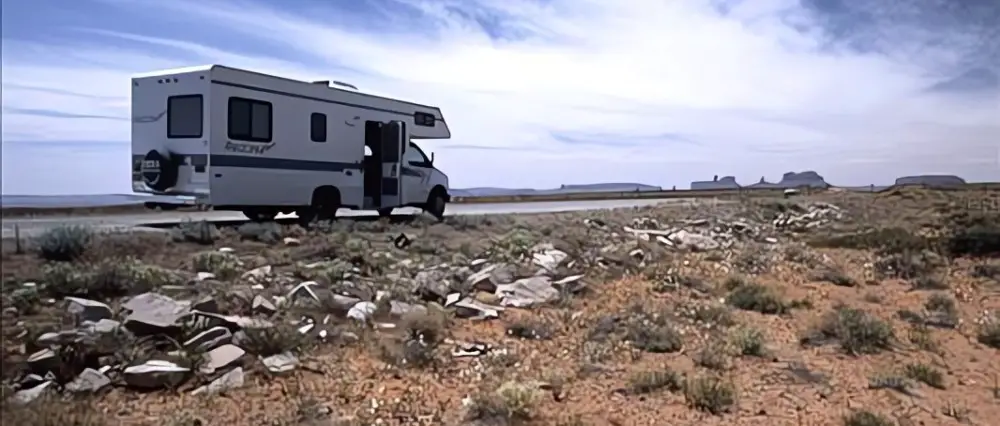
Planning Your Route
Thoughtful route planning helps ensure you have scenic detours, key stops, and campsites booked well in advance. Aspects to consider when mapping your RV route in Utah include:
Best Time to Visit Utah
Utah has four distinct seasons that each offer unique pros and cons for an RV road trip. Carefully considering the weather, crowds, attractions and road conditions for each season will help you determine the optimal time to visit.
Springtime in Utah spans the months of March through May. This shoulder season provides mild temperatures perfect for comfortable hiking and sightseeing. Cool evenings may still require jackets. Wildflowers bloom across the desert in vibrant displays of color. With most schools still in session during spring, crowds and prices at attractions remain low compared to the busy summer travel season. However, higher elevation roads and passes may still be closed by late winter snowstorms. Spring weather can be unpredictable, alternating between warm sunny days and storm systems lingering from winter. Plan to bundle up in layers and keep rain gear handy when RVing in the spring.
Utah’s summer runs from June through August. These months bring hot, dry weather perfect for exploring Utah’s iconic desert landscapes and national parks. Daytime highs frequently exceed 100°F across southern Utah’s red rock country. Summer is considered peak travel season, so crowds swarm popular parks and prices spike. Campsite and hotel reservations require booking 6-12 months out for summer trips. On the bright side, warm weather makes summer ideal for swimming, boating on Lake Powell, hiking Bryce Canyon or watching the stars at Capitol Reef. Just take precautions against the intense Southwest heat.
Autumn lasts from September through November in Utah. This is an excellent time to visit to enjoy comfortably cool temps ranging from 40-60°F, especially at higher elevations. Utah’s mountain valleys burst into hues of gold and red for a spectacular fall foliage display. RV travelers appreciate fewer crowds and more flexible itineraries after Labor Day ends the busy summer. However, high country campgrounds and trails start closing once colder weather brings winter storms. Snow typically arrives to Utah’s mountains by late October. RVers need to plan routes carefully to avoid unexpected snow closures when traveling in the fall.
The winter months of December through February bring frigid weather but dramatically snow-covered scenery to Utah. With highs averaging just above freezing even in lower elevations like Moab or St. George, winter limits RV travel primarily to the southern half of the state. Sub-zero temperatures cause water systems and holding tanks to freeze in RVs not designed specifically for cold weather. While winter has the least crowds and lowest prices due to school being in session, many attractions, roads and campgrounds have limited availability or close entirely once snow arrives. However, intrepid RVers can enjoy off-season adventures snowshoeing Bryce Canyon or skiing the slopes if properly equipped for winter travel.
Overall the shoulder seasons of spring and fall balance pleasant weather with fewer crowds, making them ideal for most RVers to experience Utah’s natural wonders. Schedule your trip wisely based on your RV’s capabilities and the experiences you desire.
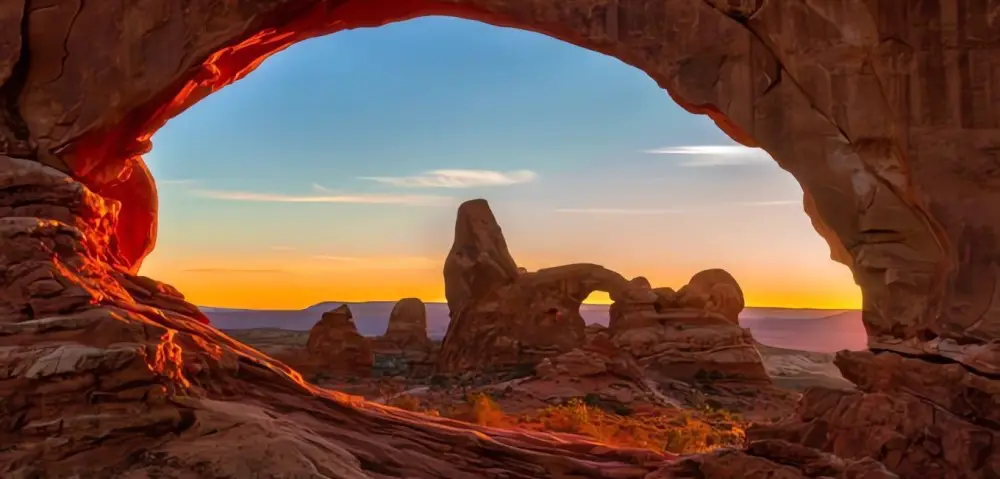
Key Destinations in Utah
When mapping your RV route through Utah, be sure to include these iconic and breathtaking destinations that are well-suited for RV travel.
Utah is famous for its Mighty 5 National Parks of Zion, Bryce Canyon, Capitol Reef, Arches and Canyonlands. Each park showcases stunning geology and scenery ranging from soaring red rock cliffs to maze-like sandstone formations. Zion boasts towering temple-like cliffs and narrow slot canyons to explore. Bryce Canyon is known for its bristlecone pines and the whimsical colorful limestone hoodoos clustered along its amphitheater rims. Capitol Reef’s centerpiece is the 100-mile long Waterpocket Fold monocline with graceful sandstone domes and cliffs. Arches National Park contains the world’s greatest concentration of natural stone arches, windows and spires like the iconic Delicate Arch. Canyonlands protects a colorful maze of canyons sculpted by the Colorado and Green Rivers. You could easily spend weeks exploring the Mighty 5 parks alone.
Adjacent to several Mighty 5 parks lies the Grand Staircase-Escalante National Monument. This remote 1.9 million acre area features breathtaking slot canyons, weathered pink cliffs, cascading waterfalls and abundant dinosaur fossils just waiting to be discovered. Goblin Valley State Park east of Capitol Reef also showcases quirky mushroom shaped hoodoos amid a Martian-looking landscape.
The Bonneville Salt Flats west of Salt Lake City provide a unique geological wonder. This 30,000 acre salt pan landscape contains surreal bright white salt crust left by an ancient lake. Famous for land speed racing, the perfectly flat salty terrain provides an ideal race track. Beyond the salt flats, sparkling Bear Lake straddles the Utah-Idaho border. Its bright turquoise waters backed by Alpine peaks draw visitors to swim, boat and fish. Further northeast, Flaming Gorge National Recreation Area impresses with its epic red canyon cliffs plunging over 500 feet down to the Green River’s reservoir. Abundant wildlife and excellent trout fishing attract outdoor enthusiasts.
Utah’s scenic byways thread together its natural and historic attractions. State Highway 12 Scenic Byway and Highway 24 near Capitol Reef provide panoramic canyon views. The 236-mile Dinosaur Diamond Prehistoric Highway connects Vernal-area dinosaur fossil quarries. The Trail of the Ancients National Scenic Byway crosses Native American archaeological and cultural sites in southeast Utah. Allow extra time for stops and detours as you drive Utah’s most scenic stretches of pavement.
Carefully research campground availability, weather patterns, and potential road closures along your intended route based on the season. Flexibility allows you to easily modify your itinerary and follow the road less traveled through Utah’s stunning backcountry.
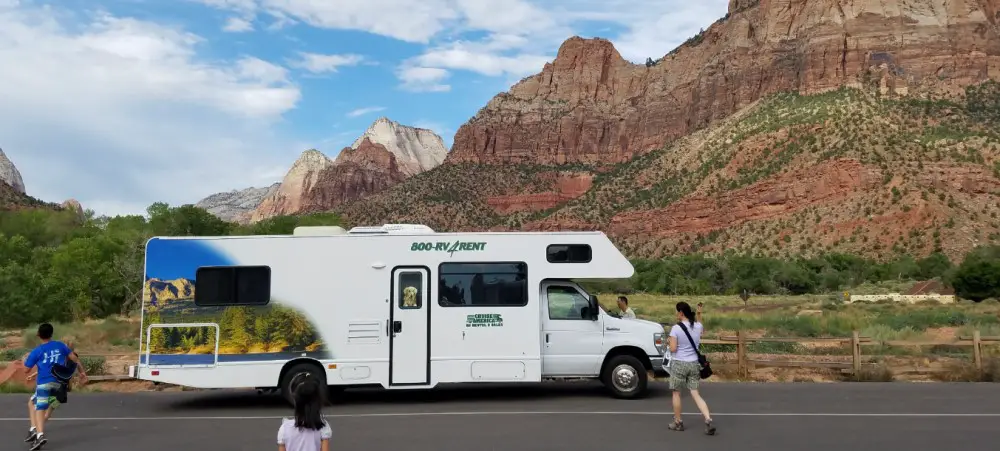
Essential Packing List
Packing well for your RV adventure will keep you safe and comfortable on the road. Be sure to bring along:
RV Essentials
- Fresh water hoses, sewer hoses, gloves to handle waste
- Power cords to plug into campground electricity
- Wheel chocks, leveling blocks and jack pads to stabilize RV
- Basic tools like hammer, pliers, wrenches and cordless drill
- RV-safe cleaning supplies plus garbage and recycling bags
- High quality RV surge protector
- Spare fuses, light bulbs, tie-down straps, gloves and hatchets
- Wheel chocks and extra leveling blocks
- Sewer gloves and extra sewer hoses
- Generator fuel and extra batteries
- Gas cans and spare propane tanks
- Wheel chocks, extra leveling blocks, and tire pressure gauge
- Water filtration system and drinking water hose
- Heavy duty extension cord for campsites
- Sewer hose supports, caps, and chemicals
Personal Essentials
- Clothing layers for changing weather plus hats and closed toe shoes
- Rain jacket and rain boots
- Warm pajamas, robes and slippers
- Multiple swimsuits if camping near water
- Hiking shoes or boots if planning outdoor activities
- Fishing poles and tackle if interested
- Camp chairs, hammock and outdoor mats
- Headlamps, flashlights and lanterns
- Insect repellent, sunscreen and basic first aid
- Important documents and cash in case of emergency
- Prepared foods, snacks plus coffees and electrolyte drinks
- Reusable water bottles and drinking cups
- Toilet paper, paper towels, ziplock bags and aluminum foil
- Cell phone chargers, batteries, cables and adapters
- Digital camera, memory cards and chargers
- Camping guidebooks and paper maps as backup
- Binoculars for viewing scenery and wildlife
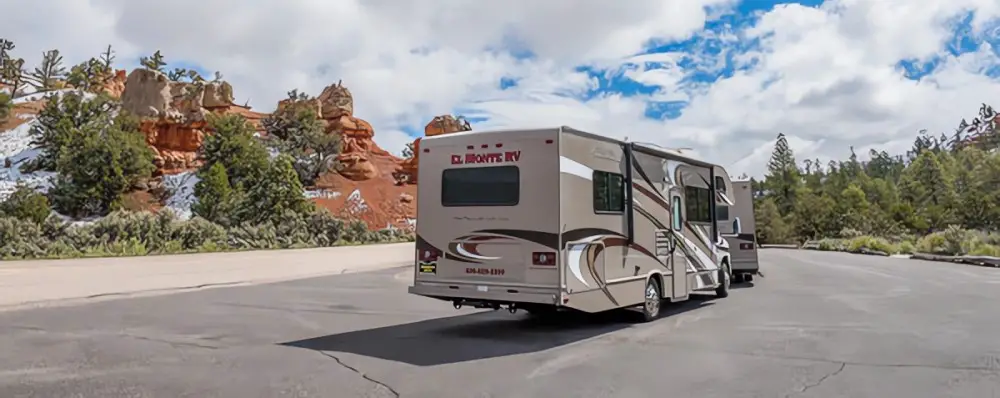
Staying Safe on the Road
When RVing in Utah, it’s crucial to brush up on road safety laws and defensive driving practices. This will help ensure your trip remains safe amid unfamiliar roads and changing conditions.
Road Safety Tips
Utah’s mountainous terrain brings winding roads and extreme elevation changes. Adjust your driving accordingly:
Strictly obey posted speed limits, especially on narrow canyon roads and descending steep grades. The RV’s weight and momentum make braking distances much longer than a car.
Drive 5-10mph below speed limits on steep downhill grades and fully engage your tow vehicle’s lower gears, 4WD or engine brakes for controlled descents. Downshifting helps slow your rig without riding the brakes.
If traffic stacks up behind your slow-moving RV on mountain highways, activate your hazard lights and use pullouts when available to let others pass safely.
Closely follow weather reports and avoid driving during storms or when slick road conditions exist. Snow, ice and heavy rains create dangerous situations for RVs.
Carefully plan your intended route to avoid extremely steep mountain passes and roads where RVs are prohibited. Research and use RV-friendly navigation apps.
Make frequent stops for rest breaks when driving long distances. Fatigue diminishes reflexes and increases accident risks. Stretch your legs and eat healthy snacks to stay alert.
Stay hydrated by drinking plenty of water while driving to prevent headaches, dizziness and impaired concentration. Keep water bottles handy in the RV cabin.
Utah State Driving Laws
When road tripping through Utah in your RV, follow these statewide driving laws:
Wearing seat belts is mandatory for all passengers, including those seated in the RV cabin or living area while driving. Utah strictly enforces seat belt usage.
Cell phone use is prohibited altogether for teenage and novice drivers under 18. Adult drivers must employ hands-free devices and avoid distraction.
On rural interstate highways, the maximum speed limit is 80 mph. Limits fall to 65-75 mph on urban highways, with lower speed limits on smaller roads and in towns.
RVs and all vehicles towing trailers are restricted from using the left passing lanes on interstates and major divided highways. Keep right except when passing.
All children under age 8 travelling in Utah must be properly restrained in federally approved child safety seats suitable for their age and size.
Headlights must be switched on 30 minutes after sunset until 30 minutes before sunrise for visibility. Use low beams when following other vehicles.
By carefully obeying Utah’s driving laws and practicing safe RV driving habits, you’ll avoid traffic citations while keeping your trip hazard-free. Drive courteously and defensively as you take in Utah’s spectacular scenery.
Camping and Accommodation
With Utah’s wealth of natural wonders, finding campsites takes advance planning:
Best RV Campgrounds in Utah
From RV parks to boondocking sites, excellent options exist:
- Zion River Resort, Virgin – Shady full-hookup sites near Zion’s south entrance with pool and hot tub.
- Dead Horse Point State Park, Moab – Epic views atop canyon cliffs near Canyonlands NP with electric sites.
- Canyonlands RV Resort, Moab – Colorful southwestern decor and amenities like pools, hot tubs and a dog park.
- Capitol Reef Resort, Torrey – Large site convenience near Capitol Reef NP and scenic Highway 24.
- Deer Creek State Park, Wallsburg – Waterfront electric sites on a reservoir at the edge of Wasatch mountains.
- Mirror Lake Highway Boondocking – Free undeveloped camping along this scenic byway in Uinta mountains.
Check RV Park Reviews and the Dyrt campground database to research locations.
Booking and Reservation Tips
- Reserve 6-12 months in advance for peak season at popular parks.
- Consider booking multiple short stays vs fewer long stays for flexibility.
- Look into regional park passes to save money at participating RV parks.
- Download campground apps to view real-time site availability and book from your phone.
- Check cancellation policies in case plans change. Seek refundable sites.
Booking ahead ensures you’ll have campsites waiting after long days exploring Utah’s iconic landscapes.
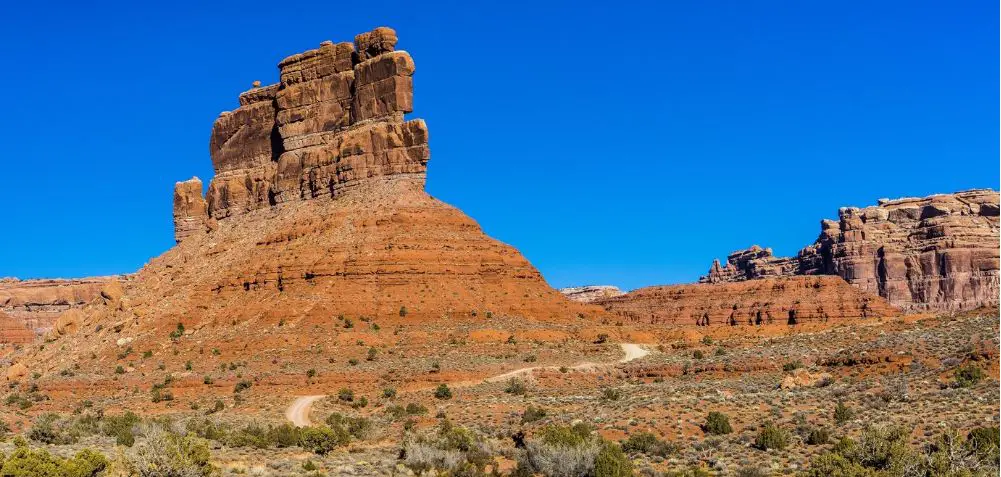
Enjoying Utah’s Attractions
The highlights of any Utah RV adventure involve exploring the state’s wealth of natural and cultural attractions:
Natural Wonders
Utah’s storied national parks top every RVer’s itinerary. Don’t miss:
- Zion – Hike cliffside Angel’s Landing trail or traverse Zion Canyon Scenic Drive gazing up at glowing red cliffs.
- Bryce Canyon – Marvel at the spires and hoodoos glowing like a cathedral in sunrise’s golden light.
- Capitol Reef – Drive the scenic highway under grand rock domes and arches of the Waterpocket Fold.
- Arches – Explore trails passing beneath giant sandstone arches and soaring rock fins.
- Canyonlands – See vast Island in the Sky mesa and canyoneering mecca at The Needles district.
Beyond the national parks, Utah’s state parks and public lands hide more treasures like Goblin Valley’s quirky hoodoos and the contorted Narrows route in Zion. Discovering lesser-known gems makes the journey as rewarding as the destination.
Cultural and Historical Sites
Balance natural beauty with cultural attractions:
- Monument Valley Navajo Tribal Park – Iconic sandstone buttes and desert panoramas backdrop of western films.
- Moab Giants Dinosaur Park – Explore giant dinosaur models and ancient fossil beds.
- Mormon Pioneer National Historic Trail – Follow the 1,300 mile route early settlers took to Utah.
- Capitol Reef Petroglyphs – View rock art left by Fremont Native Americans who inhabited this region over 1000 years ago.
- Historic Main Streets – Peruse eclectic shops and eateries in charming towns like Springdale, Torrey or Moab.
From dinosaur bones to cowboy culture, Utah’s past resonates amid its dramatic landscapes.
Conclusion
An RV excursion through Utah guarantees endless inspiration with its wealth of natural splendor and exhilarating outdoor experiences. From glowing red rock canyons to scenic mountain ranges, this trip will create lasting memories. By researching RV rentals, planning your optimal route and itinerary, following road safety, booking campsites in advance, and packing essentials for adventure, you will be set for the perfect Utah RV getaway. Begin your trip by embracing southern Utah’s iconic national parks before heading north to discover more of Utah’s hidden gems. Let the grandeur of “The Mighty 5” take your breath away, then continue exploring to create your own epic RV journey across this strikingly beautiful state. Utah’s rugged yet accessible terrain offers the ideal playground for your next RV trip. Just steer your rig towards endless horizons and enjoy the ride!
Frequently Asked Questions
What are some recommended national park RV trip itineraries in Utah?
Some popular RV itineraries to see Utah’s Mighty 5 national parks include:
- Starting in Moab area to visit Arches and Canyonlands, then heading south to Capitol Reef, Bryce Canyon and finishing at Zion.
- Doing the parks in reverse order, beginning at Zion or Bryce Canyon, then north to Capitol Reef, Arches and Canyonlands.
- Focusing on just the southern parks of Zion, Bryce and Capitol Reef over 1-2 weeks for an in-depth tour.
- Exploring Arches and Canyonlands first, then looping back south via Scenic Byway 12 to see Bryce Canyon and Zion.
- Combining visits to the national parks with outdoor adventures around Moab, Bear Lake State Park or Flaming Gorge.
How do I plan a Southern Utah travel itinerary for an RV trip?
For southern Utah, consider these can’t miss stops:
- 2-3 days in Zion National Park and the town of Springdale
- 1-2 days at Bryce Canyon National Park, overnight in nearby town of Tropic or Red Canyon
- Capitol Reef National Park along Scenic Highway 12
- Grand Staircase-Escalante National Monument and Kodachrome State Park
- Slot canyons like Antelope Canyon outside Page, AZ
- Monument Valley Navajo Tribal Park
- Scenic drives like Highway 12 and Highway 89
What resources are available for planning a Utah State Park RV trip?
Utah’s state parks website provides maps, descriptions and amenity info for planning an itinerary. CampsitePhotos and ReserveAmerica allow you to view and reserve campsites at many state parks. Attractions like Goblin Valley, Dead Horse Point and more offer spectacular scenery.
Where can I find a guide to Utah State Parks?
The official Visit Utah tourism website has an in-depth Utah State Parks Travel Guide to download, covering the 43 unique state parks across the state. The guide details campgrounds, activities, fees, addresses and more.
What should I consider when renting an RV for a Utah national parks trip?
When renting an RV, consider the vehicle size, mileage, insurance and convenience fees to find the best deal. Choose a lighter, more nimble RV for ease in Utah’s mountainous parks. Look into one-way rentals starting in Las Vegas or Denver. Rent early for best selection.
How long does it typically take to visit all five national parks in Utah by RV?
It takes a minimum of 1 week to tour all 5 parks stopping just for highlights. 2-3 weeks allows time to enjoy hikes and activities. Visiting in shoulder season with fewer crowds provides more flexibility. Limit long drives by overnighting at campgrounds near each park.


